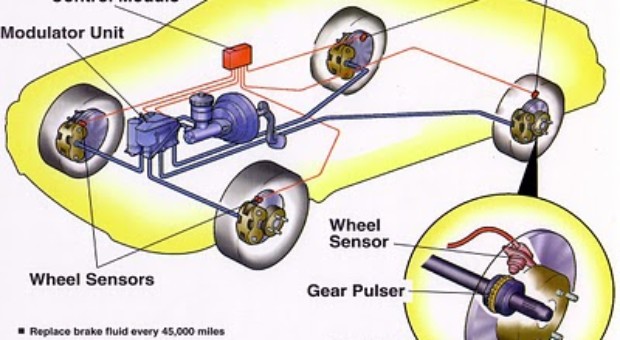
An anti-lock braking system, or ABS is a safety system which prevents the wheels on a motor vehicle from locking up (or ceasing to rotate) while braking.
A rotating road wheel allows the driver to maintain steering control under heavy braking by preventing a skid and allowing the wheel to continue interacting tractively with the road surface as directed by driver steering inputs.
ABS offers improved vehicle control and decreases stopping distances on dry and especially slippery surfaces.
However, on loose surfaces like gravel and snow-on-pavement, it can slightly increase braking distance while still improving vehicle control.
Since initial widespread use in production cars, anti-lock braking systems have evolved considerably. Recent versions not only prevent wheel lock under braking, but also electronically control the front-to-rear brake bias.
This function, depending on its specific capabilities and implementation, is known as electronic brakeforce distribution (EBD), traction control system, emergency brake assist, or electronic stability control.
The anti-lock brake controller is also known as the CAB (Controller Anti-lock Brake).
A typical ABS is composed of a central electronic control unit (ECU), four wheel speed sensors — one for each wheel — and two or more hydraulic valves within the brake hydraulics.
The ECU constantly monitors the rotational speed of each wheel, and when it detects a wheel rotating significantly slower than the others — a condition indicative of impending wheel lock — it actuates the valves to reduce hydraulic pressure to the brake at the affected wheel, thus reducing the braking force on that wheel. The wheel then turns faster; when the ECU detects it is turning significantly faster than the others, brake hydraulic pressure to the wheel is increased so the braking force is reapplied and the wheel slows.
This process is repeated continuously, and can be detected by the driver via brake pedal pulsation. Engine is influenced by the ABS System.
Anti-Lock Brake Systems Video
Source: Some test portions from Wikipedia

















